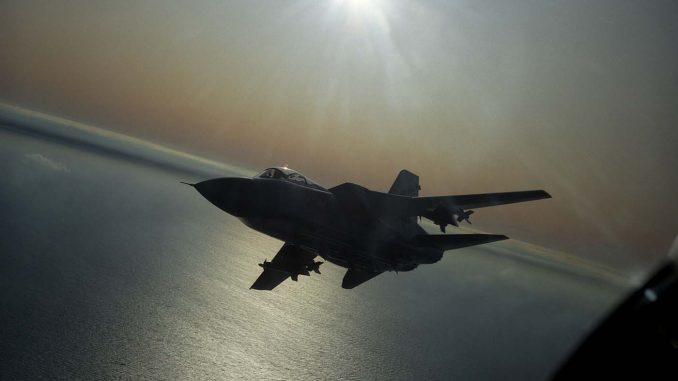
Pilot Report: This another in our series of recorded flying experiences that we have received from readers and adapted for our website. We will publish further accounts from time-to-time, but are eager to record more for the future. If any readers are interested in sharing their own memories and stories with us, please do contact us HERE.
By David Gledhill via Flying Graphics
Thanks for the chance to reminisce a little. I have probably told most of my aviation stories having published seven books but a few memories still lurk.
I served for many years as an instructor on the operational conversion units for both the Phantom and the Tornado F3, finishing my time at Royal Air Force Coningsby as the Executive Officer on No. 56 (Reserve) Squadron. My unit trained the crews converting onto the aircraft before they moved off to their operational roles on the squadrons. As the XO, part of my job was to oversee the flying effort and to allocate tasks to slots and to ensure that each course going through training was allocated enough sorties on the program to move them up the “slippery slope”. The progress graph never flattened, the throughput was merciless and it put enormous pressure on both aircrew and ground crew alike, to fly and fix our allocated airframes.
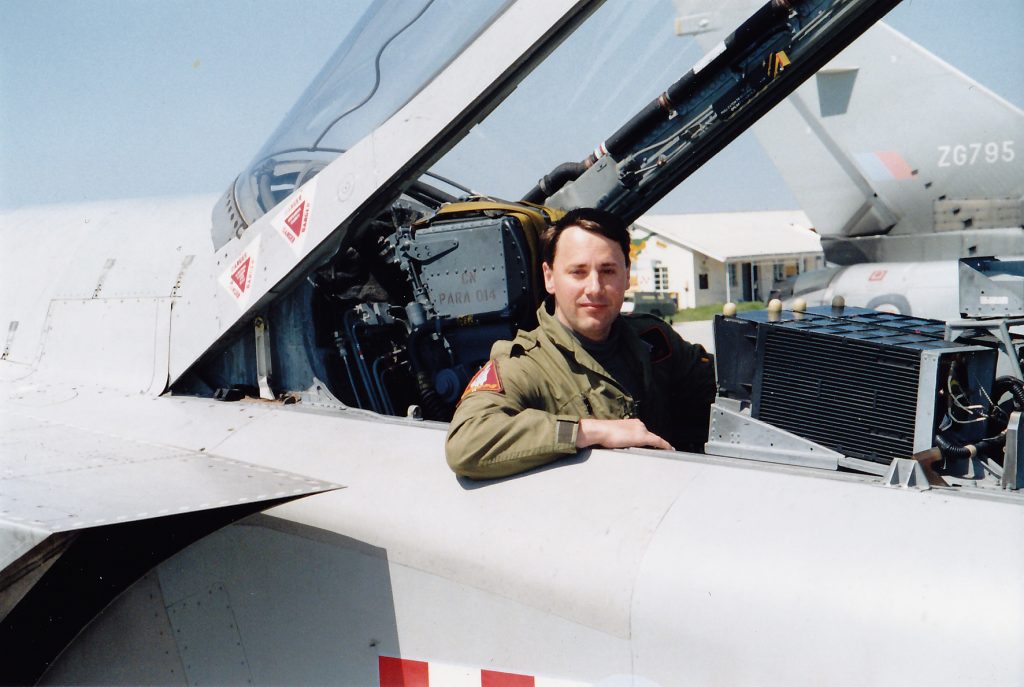
When the opportunity arose, one of the more pleasant duties was to host aviation photographers for the occasional event, to capture images of the F3 in the air. As aircrew we tried our best to get some happy snaps with our “box brownies”, but it was always a treat to fly a professional and then to marvel at the results. The OCU was a good place to host such events as we often flew a third aircraft in a formation which acted as a “target” for the “fighters” on training sorties. It could carry a photographer in the back without needing to dedicate a whole sortie to the task.
A famous aviation photographer, Geoff Lee, was due to visit the squadron back in the early 1990s. He is a legend in the aviation photography world and his company, Planescene, has produced some of the finest images of aircraft ever captured in the UK. A sortie was planned to depict some airborne shots of a 56 Squadron F3 with a drill missile load. The subject jet was to be part of a three-ship training formation and was scheduled to take off after lunch on a winter’s day.
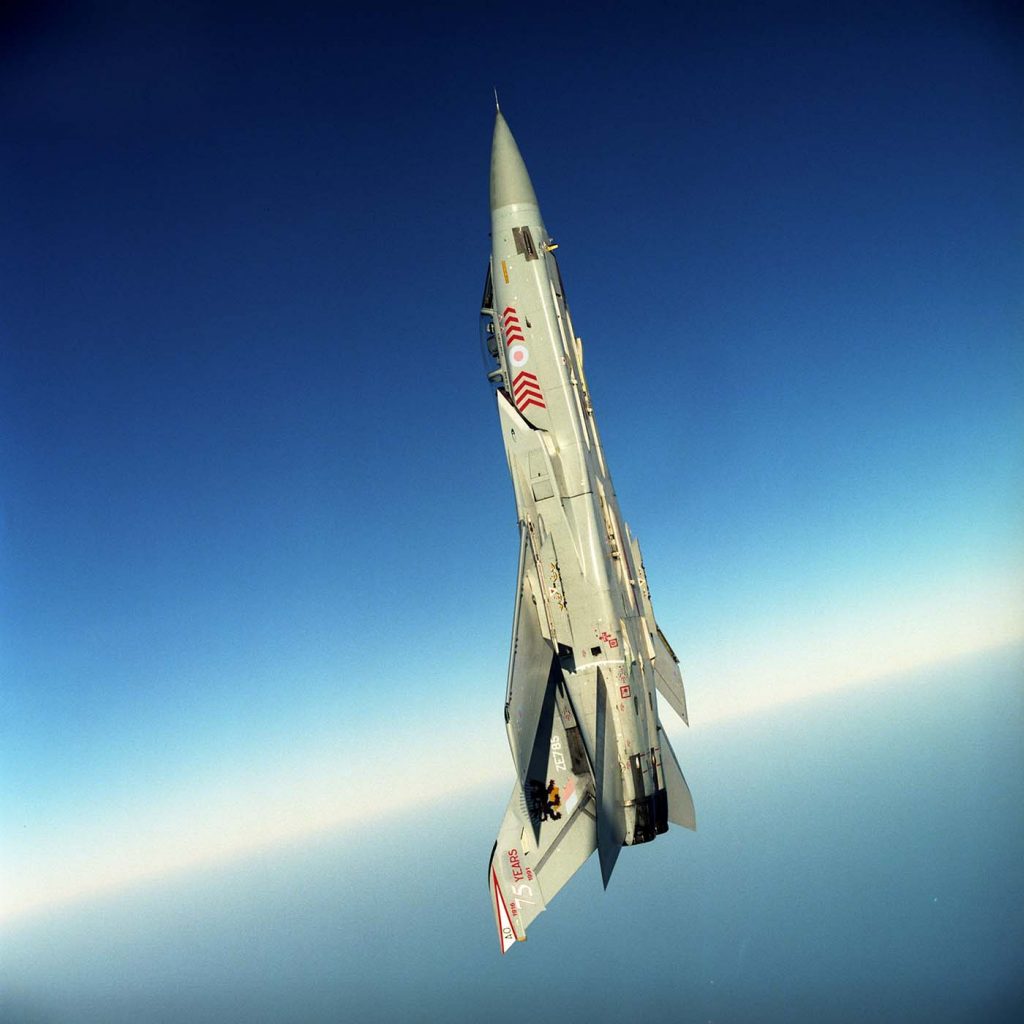
The morning had been a typical day with twelve sorties planned to launch starting at 0830 and a further ten at 1100. A student sortie demanded a fully serviceable weapons system but the Foxhunter was still misbehaving and was not the most reliable piece of kit in the world. An aircraft with an unserviceable radar could still get airborne to act as a “tethered goat” and still be productive. Inevitably, a photography event was lower priority than training sorties but Geoff was flexible so I was confident that, providing the jet had two engines and a hydraulic system that worked, we could launch something to get him airborne. Two serviceable jets for the students in the other aircraft, however, would prove more of a challenge.
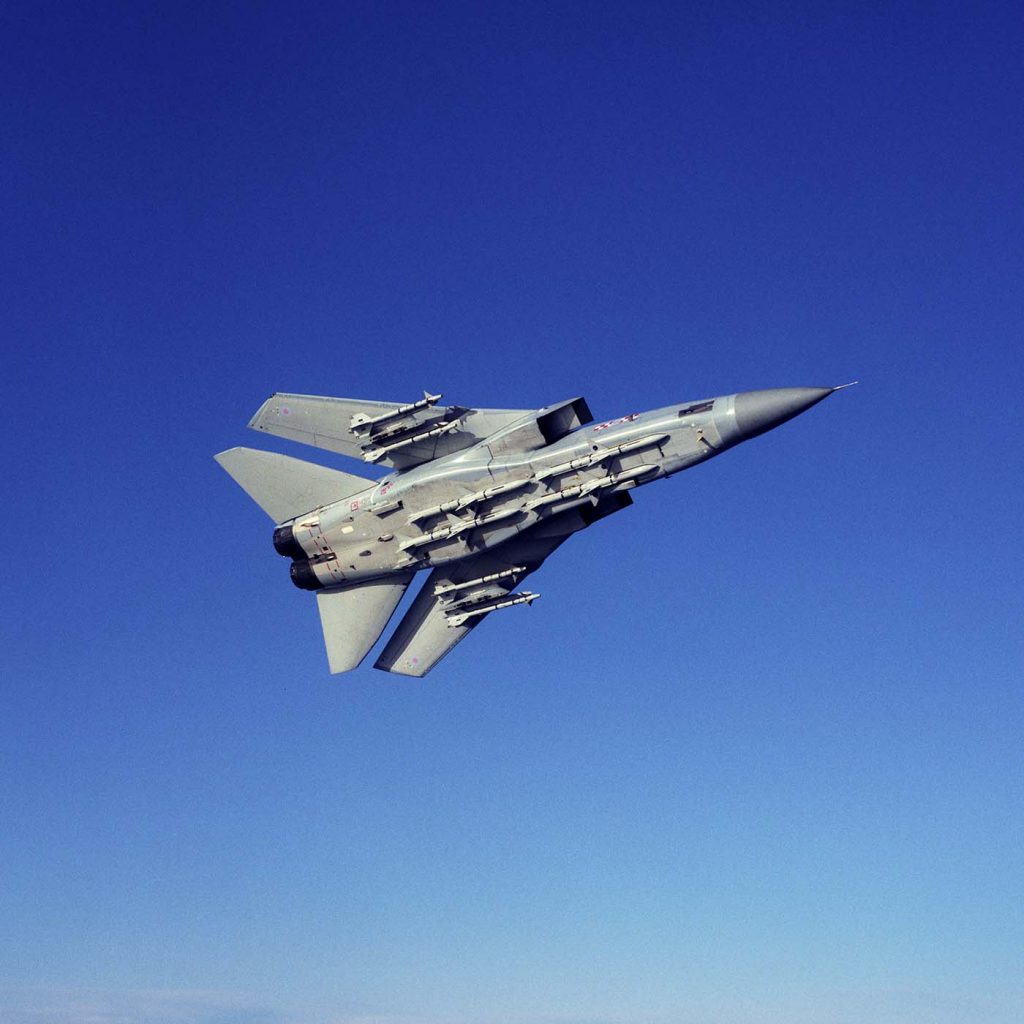
As the aircraft began to fall over with various unserviceabilities – a typical day on the busy OCU – I began to fear that we would lose the sortie. The final wave of eight jets became six and slowly dropped to three. Those who have lived and worked on squadrons will be familiar with this feature of life. The program was typically a dream sheet and relied on a number of jigsaw pieces falling together in an unlikely fashion. By mid afternoon, the jigsaw was undoubtedly missing a lot of pieces. Even so, we still lived in hope.
As aircrew, you briefed the sortie and, after checking with the Duty Authoriser on the Operations Desk – who was adept at jigsaw puzzles – you retired to the crew room waiting for the promised jet to materialize. This was one such day and the 1230 takeoff slipped to 1330 and then to 1430. Now bear in mind that this was winter and the time slot for daytime flying was short. Add to that, the photographic event had its own demands. Geoff was visibly concerned as his busy schedule would not allow him to return to repeat the sortie for many months. Having asked the armorers to load drill Skyflash and Sidewinder missiles onto the F3 which was to be the subject for the pictures, we were equally keen to see the sortie go ahead. His biggest concern was that on a winter’s day, light levels were dropping rapidly to the point where the quality would be affected. The afternoon drifted onward and the clock ticked ominously towards the cut-off time, after which his subject would be but a dark shadow.
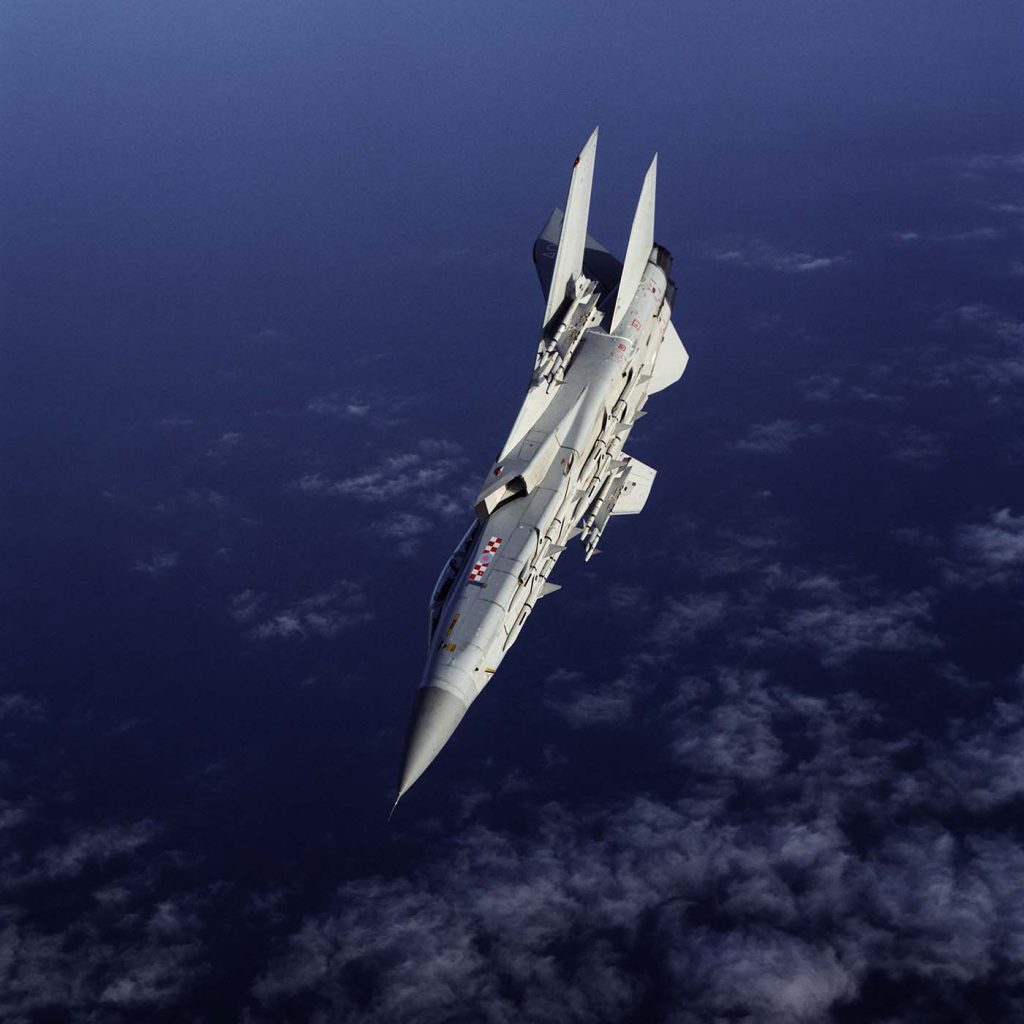
With only minutes to spare, the promised jet was pre-flighted, the crews did a swift out-brief and walked for the aircraft, taking to the skies over Lincolnshire. Most of us would not see the results of the efforts for some time but they proved to be worth the wait.
Geoff produced the usual raft of impressive pictures including shots of the armed F3 in a myriad of poses that we mere aircrew could never hope to reproduce. We thought the shot in the vertical would be the ultimate pose as catching that precise moment in time was a challenge. The two jets, the subject and the camera ship, would accelerate in the horizontal, picking up about 450 to 500 knots. On command, the pair would pull up into the vertical, bringing the wings forward and deploying the maneuver devices as the speed bled off. The zoom into the upper air coincided with a moment when all ideas of a pretty separation of the Tornados went by the wayside. Invariably, it was a roll away, or even an inelegant lunge – at which point photography was impossible. Both jets would fall out of the maneuver in a most ungainly fashion. If the rapid shutter technique had worked, and Geoff had some big lenses, maybe one of the shots would be that perfect juxtaposition of Tornado against the horizon. Maybe. . .
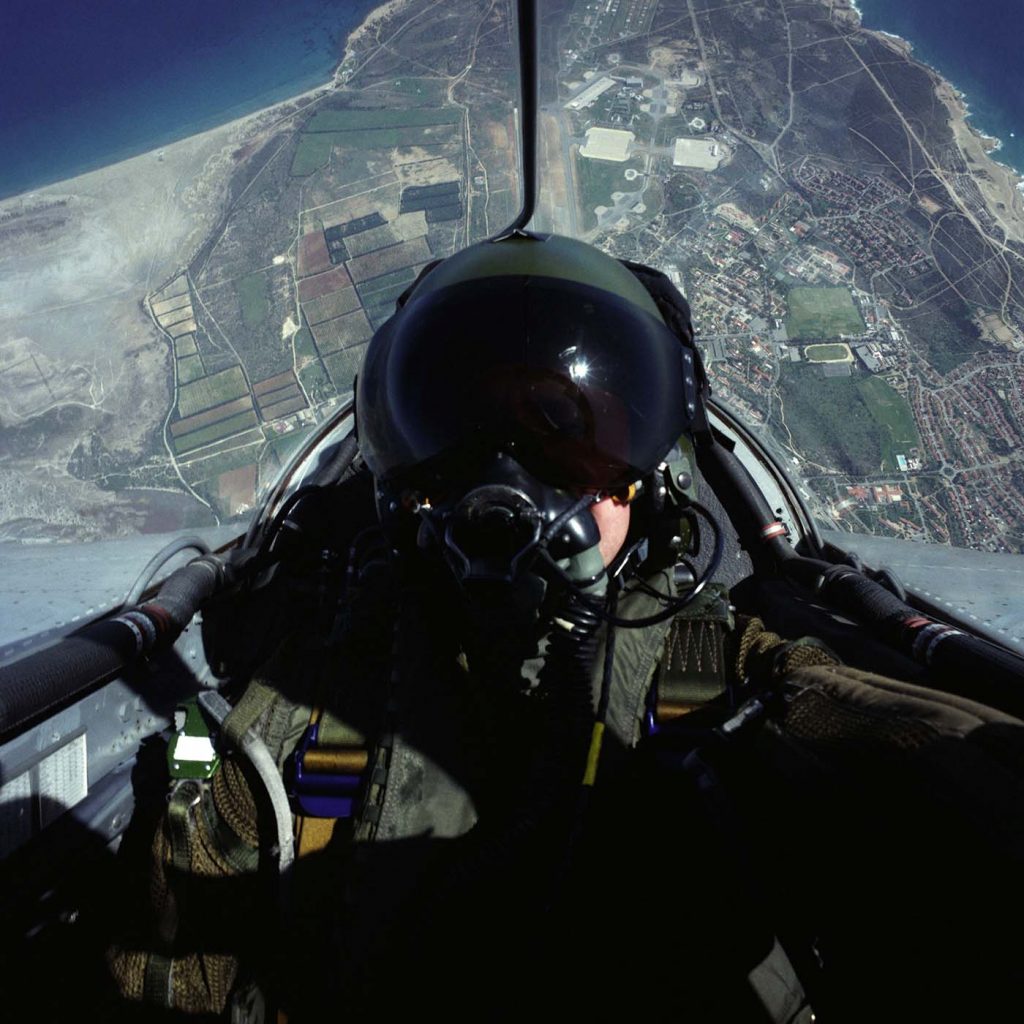
In fact, Geoff saved the best for last. As the sun set, he snapped a photograph which is still my all time favorite shot of the F3. Framed against a setting sun, he caught the F3 in full reheat, straight and level in the most dramatic pose. The light conditions were perfect. The photograph in question has since appeared in Geoff’s own books, illustrated the Introduction to the outstanding book “Tornado F3 – 25 Years of Air Defence” published by Squadron Prints and graced a book cover – Phil Keeble’s “Patrolling the Cold War Skies”. It now hangs in my hallway, captured as a watercolor by my cousin; who sadly could never reproduce the stunning colors of the original image but the painting acts as a permanent reminder of happy flying days.
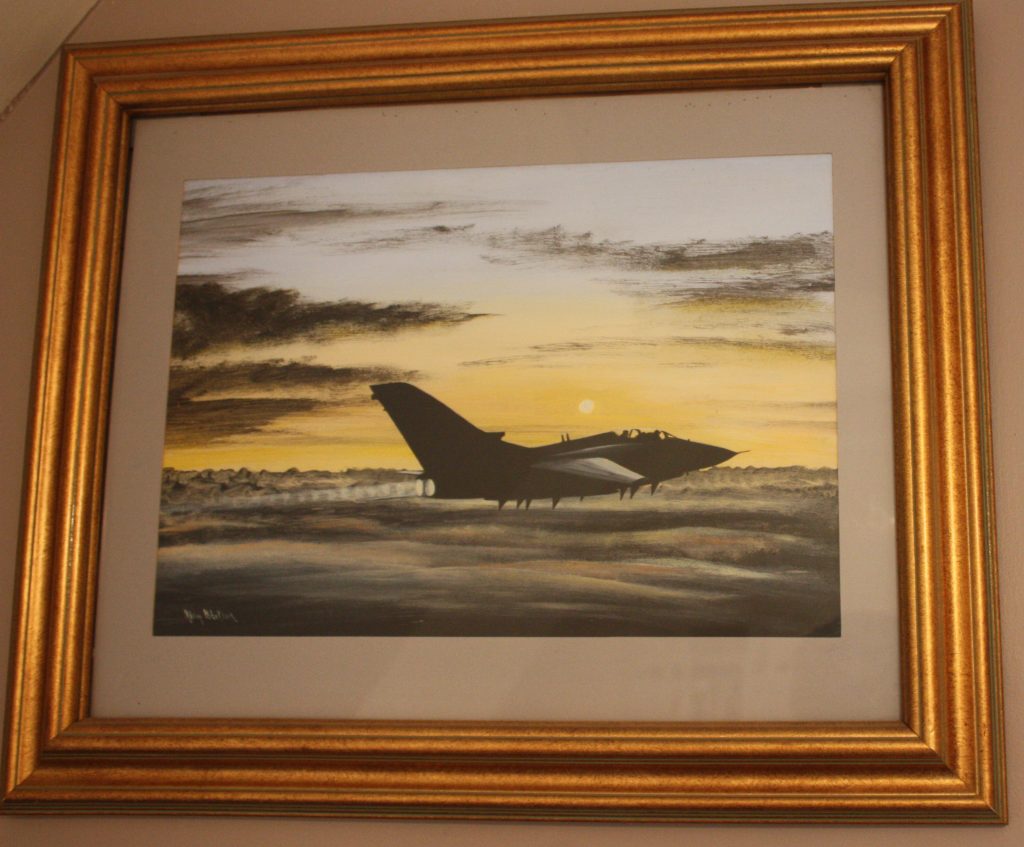
Geoff flew with us many times thereafter and has been wonderfully generous over the years in allowing us to use his photographic wizardry to illustrate our works. He remains a legend in aviation photography and has won countless awards and accolades. As always I should end on a positive note and I learned a lesson. Some days, silk purses really can come from a sow’s ear.
Images © Geoff Lee
David Gledhill joined the Royal Air Force as a Navigator in 1973. After training, he flew the F-4 Phantom on squadrons in the UK and West Germany. He was one of the first aircrew to fly the F2 and F3 Air Defence Variant of the Tornado on its acceptance into service and served for many years as an instructor on the Operational Conversion Units of both the Phantom and the Tornado. He commanded the Tornado Fighter Flight in the Falkland Islands, the Electronic Warfare Tactics and Countermeasures Wing, the Special Projects Team and was Wing Commander Operations at the Air Warfare Centre. After working extensively with the armed forces of most NATO nations, including serving as the Senior Operations Officer at the Balkans Combined Air Operations Centre, the exchange officer at the Joint Command and Control Warfare Centre in Texas and as the UK Liaison Officer at the USAF Warfare Centre at Nellis Air Force Base, he retired in 2010. He has published a number of factual books on aviation topics and novels in the Phantom Air Combat series set during the Cold War.
Pilot Report: This another in our series of recorded flying experiences that we have received from readers and adapted for our website. We will publish further accounts from time-to-time, but are eager to record more for the future. If any readers are interested in sharing their own memories and stories with us, please do contact us HERE.


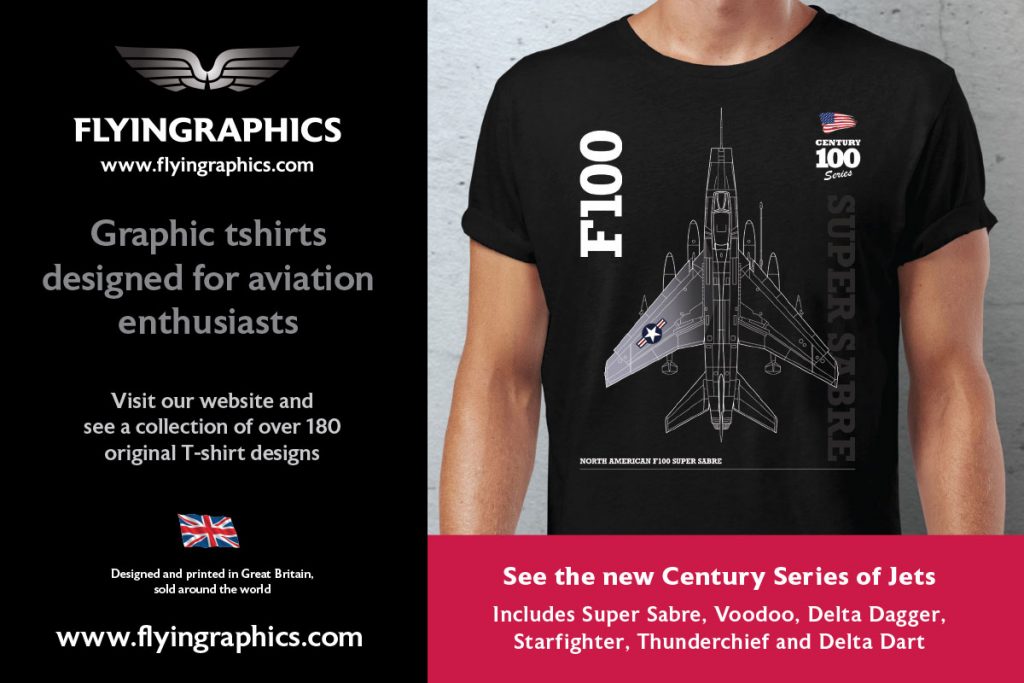
Be the first to comment
Graphic Design, Branding and Aviation Art